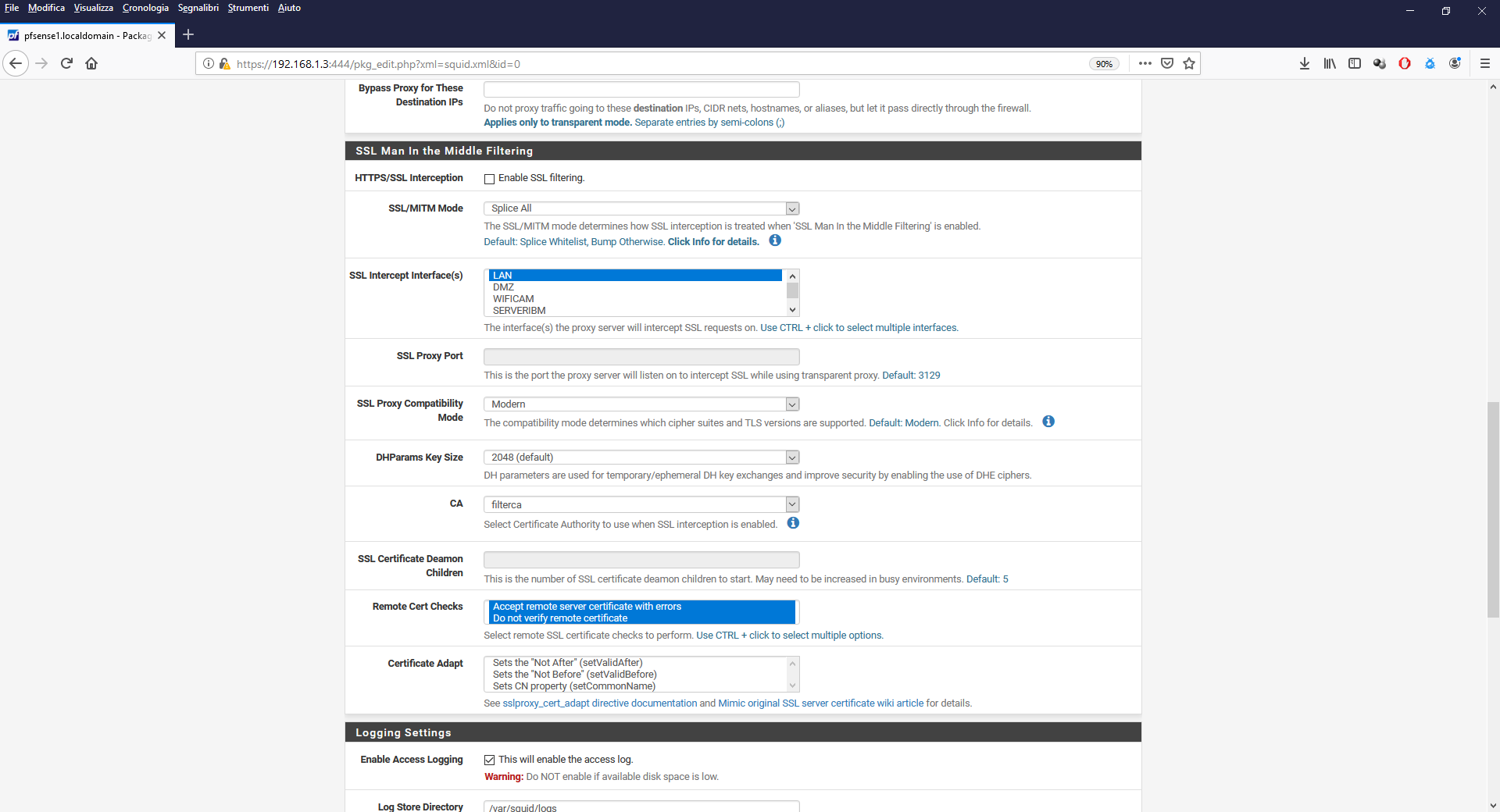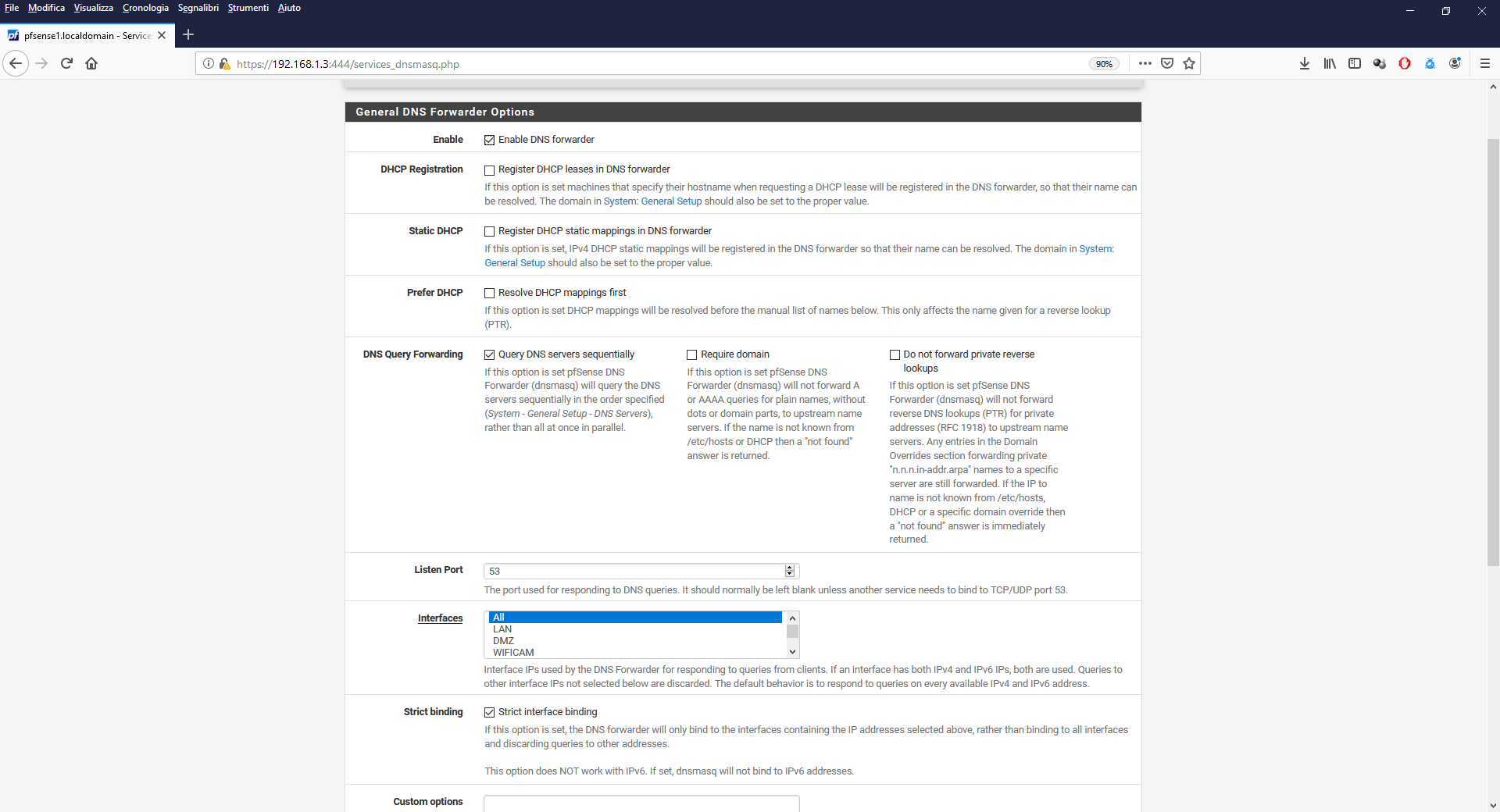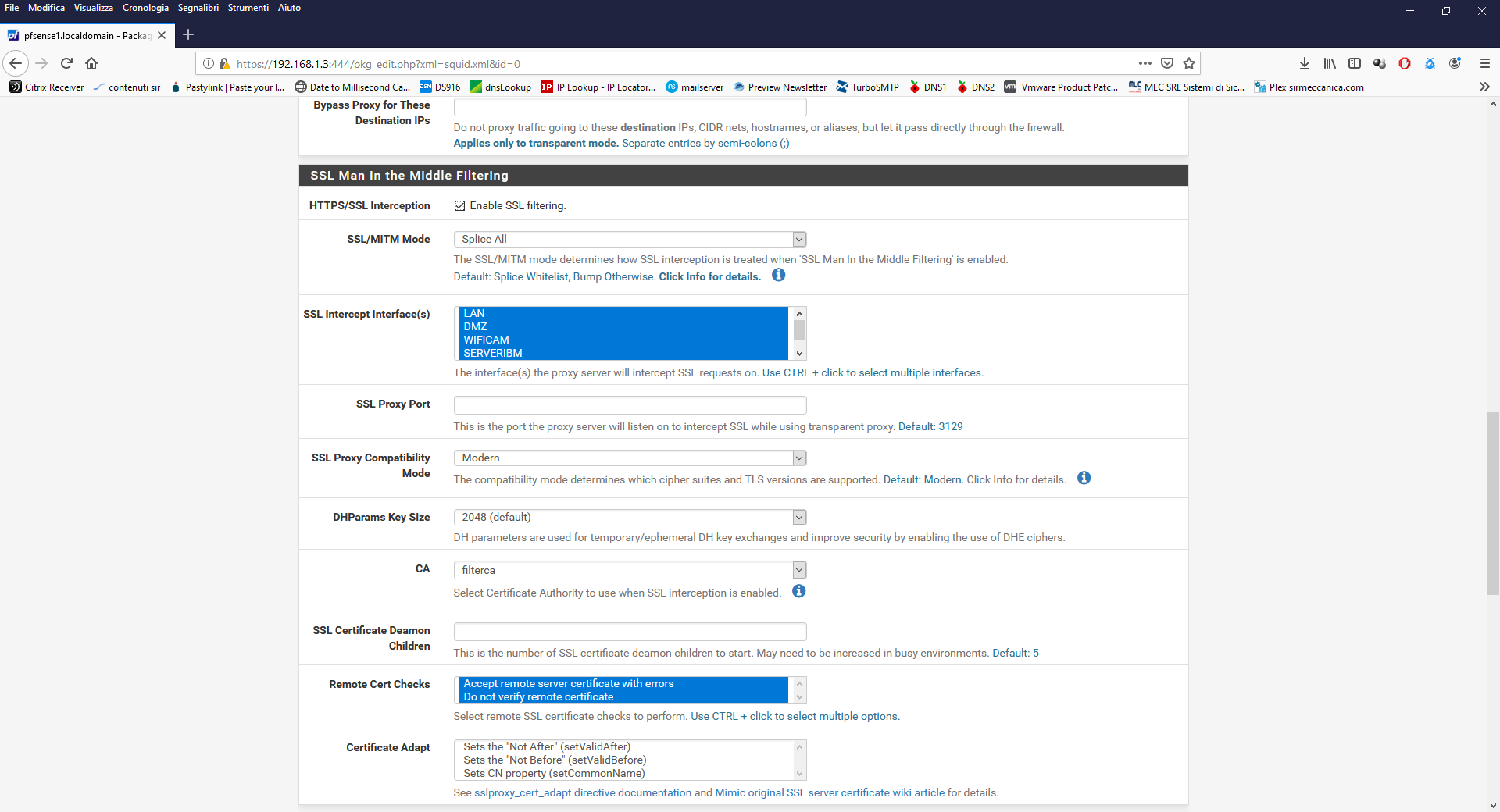Squid HTTPS/SSL Interception
-
Buon pomeriggio, da qualche setimana sto impazzendo nel configurare il proxy ssl con squid.
Ho seguito questi passi nel configurare l'HTTPS/SSL Interception :
Ho creato un nuovo CA in system/cert manager
mi sono spostato in Proxy Server: General Settings/General
e ho impostato il tutto così
(ovviamente la voce HTTPS/SSL Interception è selezionata) per ora l'ho disattivata perchè altrimenti non riesco a navigare
La navigazione sui siti in https funziona correttamente per qualche minuto, poi ho questo errore su alcuni siti tipo google.it, google.com, facebook.com
Connessione sicura non riuscita Si è verificato un errore durante la connessione a www.google.it. SSL ha ricevuto un pacchetto che eccede la dimensione massima consentita. Codice di errore: SSL_ERROR_RX_RECORD_TOO_LONG La pagina che si sta cercando di visualizzare non può essere mostrata in quanto non è possibile verificare l’autenticità dei dati ricevuti. Contattare il responsabile del sito web per informarlo del problema.disattivo l'HTTPS/SSL Interception in squid e tutto torna alla normalità.
a grandi linee la mia configurazione è:
pfsense 2.4.4 p3 64bit
squid 0.4.44_8
uso il dns forwarder dentro pfsense così configurato
Il lavoro di dns server viene svolto da 2 macchine virtuali nella stessa rete della lan di pfsense con dentro installato pihole.
Se vi dovessero servire altri parametri o configurazioni fatemi sapere.
Grazie mille in anticipo
Francesco -
Ho effettuato altre modifiche su pfsense

ma ho sempre lo stesso problema anche mettendo intermediate anzichè modern
-
Ciao , ho avuto lo stesso errore e come te per diverso tempo non sono riuscito a risolvere il problema.
Guardando bene in giro in particolare nelle docs di pfsense viene menzionato l'errore 409 dovuto a una disparità dei contenuti , ecco l'estratto :Sites not loading with splice / Error 409 in access logAs a security measure, squid will not allow a user to connect to a site that has a hostname that does not match its IP address. This prevents clients from hardcoding or altering DNS responses to evade access controls. The side effect of this, however, is that sites which employ round-robin DNS or other DNS optimizations can cause squid to block or drop connections those sites unintentionally. The squid access log will have a 409 (Conflict) error code when a connection is dropped for this reason.
This happens with sites such as Google or Facebook when the client and squid use different sources for DNS, and thus get different DNS results for the same query because the results are randomized. Even though the address for the server is valid, the disparity causes squid to drop the connection.
The solution is to have the clients use the firewall as their DNS server, so that both squid and clients use the same DNS source and the results will match.
Insomma ho risolto modificando i dns dei client direttamente sul firewall e se hai un dns interno , ti consiglio in primis di dichioarare il firewall come dns primario e il secondario il tuo server interno . Inoltre devi assolutamente abilitare il dns resolver addizionando il rewrite per il tuo dominio o host di tuo interesse . Es. dominio.local occorre dichiaralo in rewrite domain ovvero quando il firewall tenta di risolvere un host interno.local lo invio al dns interno . Spero di essere stato chiaro , anche se con i dns roundy robin e meglio esculderli dal qualsiasi controllo.
-
Grazie mille per la cordiale risposta.
Sono diversi anni che provo a risolvere questo problema ma con pfsense non ero mai riuscito a venirne a capo.
Provo subito sulla wifi aziendale e poi proseguo con lan e le altre reti.
Grazie ancora
Ti terrò aggiornato. -
Ciao , fammi sapere. Comunque è importante disattivare il dns forward e abilitare il dns resolver per permettere solo al firewall in primis di risolvere gli ip e relativa cache di squid .Inoltre come citato prima ti consiglio di rilevare i network da bypassare tramite una interrogazione ASN attivare glia alias ed escluderli da squid . Controlla i log in tempo reale e non dovresti vedere più errori 409 .